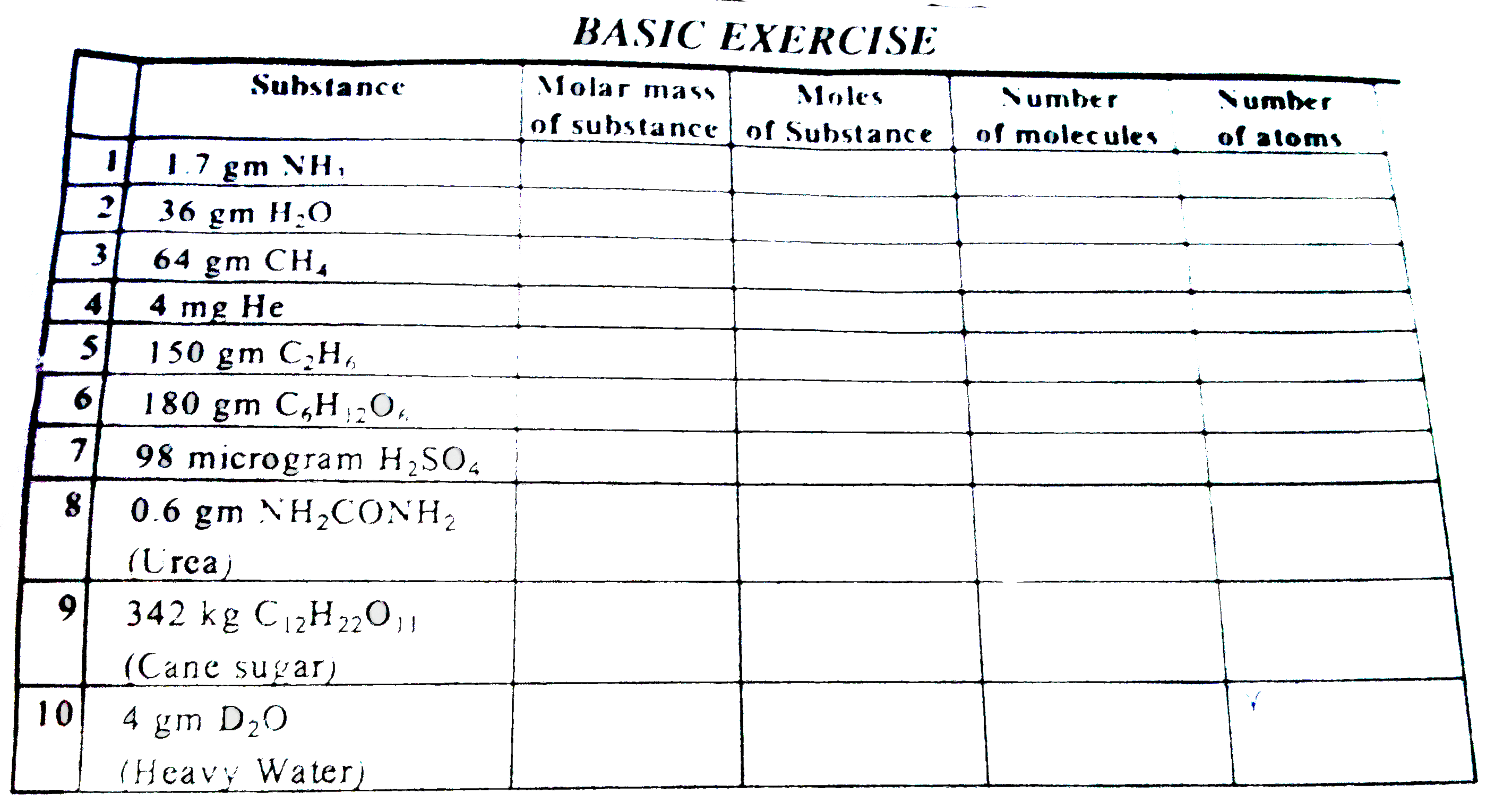For a photochemical reaction A→B,1.0×10−5 mole of B were formed on absorbing 1.2×1019 photons, quantum efficiency is : (NA=6×1023)
The correct Answer is:0.50
To calculate the quantum efficiency for the photochemical reaction A→B, we can follow these steps:
1. Understand the Concept of Quantum Efficiency:
Quantum efficiency (Φ) is defined as the ratio of the number of molecules formed to the number of photons absorbed. The formula is given by:
Φ=Number of molecules formedNumber of photons absorbed
2. Identify the Given Values:
- Moles of B formed: 1.0×10−5 moles
- Number of photons absorbed: 1.2×1019 photons
- Avogadro's number (NA): 6.0×1023 molecules/mole
3. Convert Moles of B to Molecules:
To find the number of molecules of B formed, we multiply the number of moles by Avogadro's number:
Number of molecules of B=1.0×10−5 moles×6.0×1023 molecules/mole
=6.0×1018 molecules
4. Substitute Values into the Quantum Efficiency Formula:
Now we can substitute the values into the quantum efficiency formula:
Φ=6.0×1018 molecules1.2×1019 photons
5. Calculate Quantum Efficiency:
Performing the division:
Φ=6.01.2×10181019=0.5
6. Final Result:
Therefore, the quantum efficiency of the reaction is:
Φ=0.5
Quantum efficiency (Φ) is defined as the ratio of the number of molecules formed to the number of photons absorbed. The formula is given by:
Φ=Number of molecules formedNumber of photons absorbed
- Moles of B formed: 1.0×10−5 moles
- Number of photons absorbed: 1.2×1019 photons
- Avogadro's number (NA): 6.0×1023 molecules/mole
To find the number of molecules of B formed, we multiply the number of moles by Avogadro's number:
Number of molecules of B=1.0×10−5 moles×6.0×1023 molecules/mole
=6.0×1018 molecules
Now we can substitute the values into the quantum efficiency formula:
Φ=6.0×1018 molecules1.2×1019 photons
Performing the division:
Φ=6.01.2×10181019=0.5
Therefore, the quantum efficiency of the reaction is:
Φ=0.5
Topper's Solved these Questions
- MOCK TEST 1BOOK - VMC MODULES ENGLISHCHAPTER - MOCK TEST 1EXERCISE - PART II : CHEMISTRY (SECTION-2)
10 Videos
- LIQUID SOLUTIONSBOOK - VMC MODULES ENGLISHCHAPTER - LIQUID SOLUTIONSEXERCISE - IN-CHAPTER EXERCISE -L
10 Videos
- MOCK TEST 10BOOK - VMC MODULES ENGLISHCHAPTER - MOCK TEST 10EXERCISE - CHEMISTRY (SECTION 2)
5 Videos
Similar Questions
Knowledge Check
The number of atoms in 0.1 mole of a triatomic gas is (NA=6.02×1023mol−1)
A6.026×1022B1.806×1023C3.600×1023D1.800×1022If a steam engine delivers 6.0×108J of work per minute and absorbs 5.4×109J of heat per minute from its boiler then the efficiency of the engine is
A0.11B0.12C0.13D0.14

How many moles of O-atoms are in 2.7×1025 molecules of CO2(NA=6×1023)
View SolutionThe number of F− ions in 2.1 g AlF3 is (NA=6×1023)
View SolutionThe total number of protons in 10 g of calcium carbonate is (N0=6.023×1023) :-
View SolutionOne atom of an element X weighs 6×10−23gm. Number of moles of atoms in 3.6 kg of sample of X will be : (NA=6×1023)
View SolutionThe Avogadro's number is 6.02×1023 per gm mole and electronic charge is 1.6×10−19C . The Faraday's number is
View SolutionThe number of atoms in 0.1 mol of a tetraatomic gas is (NA=6.02×1023mol−1)
View Solution

